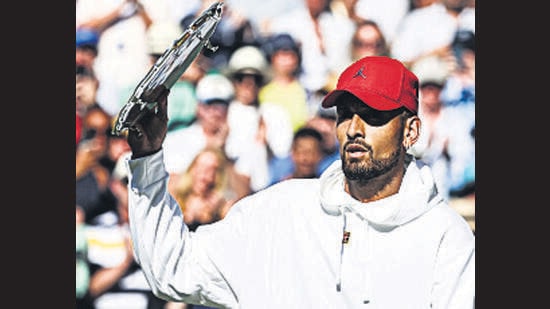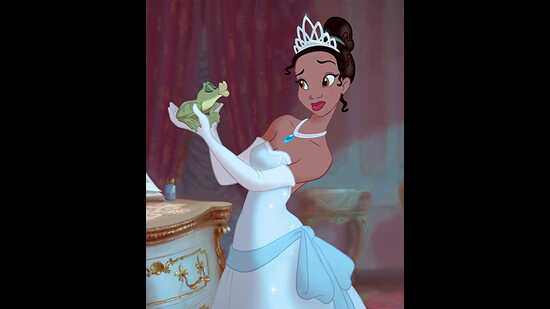India will become the world’s most populous country this year, outstripping China to number over 1.4 billion by April. (By 2050, estimates say, India will have a population of 1.6 billion, to China’s 1.3 billion.)
This means that, by April, about 18% of the world’s population will be crammed into 2.5% of the world’s total land area, with all the challenges of employment and resource allocation that entails. India’s cities continue to be both poorly run and pampered, with wastage of resources such as water and power , and poor and inadequate access to infrastructure such as housing, public transit and green open spaces.
While the rural hinterland has see progress, vast swathes of it remain backward or under-developed. The urban population stood at about 17% in 1951. That number has risen to 35.39 % as of 2021, according to data from the World Bank.
Demographically, it’s mixed news. India’s working-age population is still massive, with about 67% of the country in the 15-to-64 years bracket. But unemployment is at a high 8.3% as of December, according to data from Centre for Monitoring Indian Economy (CMIE).
The window for India to capitalise on this demographic advantage is closing. Even the wealthiest countries in Europe are struggling to support ageing populations on revenues generated by shrinking working populations,amidst a slowing economy.
The world’s total human population hit 8 billion in 2022 and is expected to peak at 11 billion by the end of the century, before starting to decline. Track the growth in real time on worldometers.info/world-population, the site we all grew to depend on as the Covid-19 pandemic spread. It was originally a population tracker, set up by software engineer Andrey Alimetov in 2004.
For a look at how the world’s population is growing, go to data visualiser Neal Agarwal’s baby map (neal.fun/baby-map/), which visualises the rate at which babies are born in countries around the world.
.
RACE TO THE FINISH
It’s set to be an unusually busy year in sport, with world championships and world cups in different disciplines overlapping in a still-crammed post-Covid calendar.
The men’s hockey world cup will be hosted this month in Odisha, for the second consecutive time. The Women’s World Boxing Championships will be held in Delhi in March. All eyes are on defending champion Nikhat Zareen.
As racetracks vroom back to life amid altered regulations (motor-racing has finally been classified as a sport, rather than as entertainment), the MotoGP will see motorcycles race at the Buddh International Circuit (above) in Greater Noida, for the first time in India. The Formula E, featuring electric cars, will make its India debut too, on a temporary track along the Hussain Sagar Lake in Hyderabad, in February.
There’s plenty of cricket, of course. India are strong contenders to win the women’s T20 World Cup, to be held in Australia in February. The men’s World Test Championship will conclude in England in June. And the men’s ODI World Cup will be held in India in October-November. India won the last time we hosted, in 2011. Click here to read HT’s Somshuvra Laha on what must change for us to win again.
To scroll through an HT special featuring essays, videos and podcasts on the highs, lows and hysteria of the history of cricket in India, click here.
.
NEW HUES AT WIMBLEDON
It’s a small change and it may be largely invisible, but the most rigidly policed tennis court will see women players wear coloured undershorts from 2023. It’s been white all the way (not even cream or off-white), since the game first began to be played here in 1877. White was chosen because sweat stains were considered unsightly and improper.

Could the cracks in this facade open the floodgates to change, particularly when it comes to dress codes for sportswomen? A new generation of athletes and players has been increasingly vocal and political, wearing unitards to protest against the sexualisation of gymnasts, taking a knee at the Olympics, fighting back against anti-breastfeeding norms.
Last year, 27-year-old runner-up Nick Kyrgios of Australia wore red sneakers on court, for a brief while before play, and a red hat at the trophy presentation. “I do what I want,” he said later.
For a Mint special on the history of sartorial rebellion and evolving fashion at Wimbledon, click here.
.
FAR OUT: SOLAR, LUNAR MISSIONS
India is reaching for the Sun this year. The Aditya L1 solar observatory is being readied for launch in March. If all goes to plan, this will make the Indian Space Research Organisation (ISRO) only the fourth space agency in the world (after NASA, the European Space Agency or ESA and the Japan Aerospace Exploration Agency or JAXA) to launch a solar mission.

Meanwhile, India is sharpening its lunar lens too. A third mission, Chandrayaan-3 or C-3, is looking at a June launch. It’s a crucial exploratory mission for India, given that the Vikram lander on C-2 ended up crash landing in 2019, preventing its Pragyaan rover from exploring the surface of the Moon. It’s always pleasant to remember that the first such Indian mission, the C-1 in 2008, helped NASA definitively prove the presence of water at the lunar poles.
Meanwhile, the four Indian Air Force officers selected to train as astronauts for Gaganyaan, India’s first manned space mission, have completed one phase of training in Russia and are now in Bengaluru, learning how to operate the spacecraft. Gaganyaan is due for launch in 2024, with a series of test flights, including an unmanned flight into orbit, planned for this year.
To see the Wknd special on Aditya L1 by Natasha Rego, click here.
Click here for a Wknd slideshow on 300 years of staring at the Sun.
.
AN EU UPDATE
On January 1, Croatia became the 19th member state of the European Union, and the 24th country in the Schengen zone, to start using the Euro. The Croatian Kuna (equal to about ₹12) will be phased out by the end of the year.
Croatia was the last addition to the European Union, in 2013, making it the EU’s 28th member state. With the UK withdrawing from the EU in end-2020, that tally is down to 27 member states. The EU was formed in 1993, with 12 founding members. A number of nations are vying for membership, with seven recognised as full-fledged candidates as of 2022. Ukraine famously applied in 2022, along with its neighbours Moldova and Georgia, weeks after the Russian invasion.
For a quick take on division and unification in Europe, see Open University’s The History of the EU in 3 minutes, narrated by the comedian David Mitchell (bit.ly/historyofEU).
.
THE RETURN OF SHAH RUKH KHAN
There was a time when all he had to do was smile, open his arms wide, and audiences rushed to the box office. He was one of the world’s biggest superstars, in the final age of the superstar.
Amid the rise of the non-Hindi Hindi hit and competition from streaming platforms and other parts of the internet, audiences turned in different directions. The result: Khan and other Bollywood superstars found themselves battling a phenomenon new to them: a long string of poorly received films. For Khan, these included Fan (2016), Jab Harry Met Sejal (2017) and Zero (2018), his last cinematic release.

SRK is storming the stage this year; expect him to be everywhere. What’s harder to predict is how his three big releases – Pathaan, Dunki and Jawan – will fare, amid an overall downturn in Bollywood box-office revenues. Of the ten highest earners of 2022, only four were films originally made in Hindi. Of the highest-earning Indian films of all time domestically, a list typically dominated by Hindi films, the top three slots are now occupied by Baahubali 2 (2017), KGF 2 (2022) and RRR (2022), films originally made in Tamil, Kannada and Telugu.
Khan’s legacy, either way, remains intact. The 2021 book Desperately Seeking Shah Rukh: India’s Lonely Young Women and the Search for Intimacy and Independence, for instance, offers an intriguing look at the trail of what this one man’s stardom, and how it intersects with the lives of his fans, and can tell us about women’s access to money, leisure and decision-making, among other things. Click here to read an excerpt.
.
DISNEY AND WARNER BROS TURN 100
Disney’s mascot Mickey Mouse remains a fixture on cakes, schoolbags and stationery. “What’s up, doc” from Warner Bros’ Bugs Bunny has gone from cartoon to catchphrase to meme.
But, as they get set to turn 100 in a changed world, both studios have been reinventing. Disney has been attempting to introduce colour and personality to its pantheon of princesses, from its first black Princess Tiana in the 2009 film The Princess and the Frog (below) to a black Ariel in this year’s upcoming Little Mermaid.

The tales still feel a bit tired. Other studios have been telling new ones. Perhaps most notable have been the DreamWorks film franchise about ogres in love, Shrek (2001-), based on William Steig’s subversive fairytale from 1990, and Pixar’s Brave (2012), starring a curly-haired redhead who gets things done despite the interference of a bumbling young hero. A Disney collaboration with Pixar yielded Coco, a delightful celebration of Mexican culture, in 2017; Disney then made Encanto, a touching tale of healing set in the mountains of Colombia, in 2021.
Fresh stories and giant superhero flicks are likely to be the focus going forward. In 2009, Disney acquired Marvel Entertainment. In 2012, Disney also bought the rights to the Star Wars franchise, which it is now leveraging via its streaming platform, Disney+.
Warner Bros, meanwhile, turned JK Rowling’s popular Harry Potter books into a hugely successful film franchise, starting in 2001. This added to its existing DC Comics pantheon, which has yielded films ranging from the first Superman in 1978 to the Batman films.
To see glimpses of the journey so far, watch filmmaker Will Seymour Murphy’s stunning 10-minute history of animation since 1832, go to bit.ly/HistoryofAnimation.
.
BATTLES ROYALE
Where it was once “jewels”, “wars” and “empire”, the terms most associated with the British royal family today have tended towards “racism”, “adultery” and “intergenerational trauma”.
In a world of digital avatars, bots that can write, and metaverses, this institution, which remains fixed in a dysfunctional 19th-century fairytale, is in existential crisis. Can King Charles III find a sustainable way forward? Will Harry and Meghan be releasing more films? What is the meaning and future of the Commonwealth, in a world already so closely connected?
As Charles is crowned in May, after a lifetime in the wings, what is it that he inherits? And how will the palace navigate the release of Prince Harry’s memoir, Spare, and all that the title alone implies (it is due for release on January 10)?
As Charles and his heirs struggle to reframe their mission and their image, take a look back at the impact of the Crown on India, with The Empire, a new podcast by William Dalrymple and Anita Anand (bit.ly/DalrympleAnandpodcast).
To crunch the numbers on what was taken from us, click here to see a Mint interview with economist Utsa Patnaik.
.
NEW ON THE MENU
The food of the future could have a big role to play in how humans tackle the climate crisis. Agriculture and forestry together account for close to 16% of all greenhouse gases. Amid a race to find more sustainable foods, scientists, manufacturers and chefs are trying experiments that range from putting insects back on the table to using seaweed to make mock meats and using cultured muscle cells in a lab to make faux meats.
The California-based Upside Foods will be the first to market a faux meat; it secured approval from the US’s Food and Drugs Administration in November. Michelin-starred chef Dominique Crenn is among those lining up to serve it. She plans to offer it at her San Francisco restaurant, Atelier Crenn. Upside, meanwhile, hopes to eventually sell cultivated chicken alongside industrially farmed poultry at supermarkets.
The true implications of mock meats and faux meats for health and a reduced carbon footprint will take years to define. For now, climate scientists are arguing that there’s an immediate shift that could help: a return to food that is local and traditional. One man has been leading a change in this direction for two decades. Rene Redzepi and his restaurant Noma have made it to best chef and best restaurant lists around the world with a menu that relies entirely on different forms of foraging in icy Denmark.
He’s since taken the idea to different parts of the world, with Noma pop-ups using local produce such as unripe macadamia nuts in Australia, melon clams in Mexico and garlic fruit leather and moss in New York City.
This year, Noma is popping up in Kyoto, Japan, from March to May, at the Ace Hotel. He’ll be using seasonal produce as well as traditional preserves such as salted sansho berries and a vegan dashi brewed from caramelized pumpkin and corn.
To hear Redzepi discuss Noma, his new recipe book, concerns over the war in Ukraine, the energy crisis and inflation, with Momofuku founder and chef David Chang, on The Dave Chang Show, go to bit.ly/ChangRedzepi.
How healthy are today’s mock meats really? Click here to read a Wknd story.
.
THE LEGACY OF TOLKIEN
2023 marks 50 years since the death of JRR Tolkien (1893-1973), but the cult of Middle-earth lives on. Fans around the world continue to embody the characters of his Lord of the Rings books (published between 1937 and 1955), recreate his worlds, study his fictional languages, and retell his tales through fan-fiction of their own.
Tolkien’s fictional communities are now admired for their sustainable ways of life and their sense of community. It is seen as no coincidence that the villain Saruman and his base of Isengard are reminiscent both of Dante’s hellscapes and of the spread of industrialisation.

Tolkien’s stories of great battles are said to have drawn from his experience of living through the two world wars. (He fought in the first one, at the Battle of the Somme in 1916).
Criticism remains centered on the near-total lack of women in his tales. (The ongoing Amazon Prime series Rings of Power seeks to rectify this.) The works have been serialised for radio, and before Peter Jackson’s epic films, cult British-American animator Ralph Bakshi animated the first two volumes of The Lord of The Rings in 1978.
What would Tolkien have made of all the fuss? “I don’t desire to go and have afternoons talking Elvish to chaps,” he once said, in a 1968 interview with BBC. To watch an excerpt from that interview, g to bit.ly/TolkienBBC. Meanwhile, Tolkien’s fans soldier on. To see some of the vast body of Tolkien fan-fiction, go to bit.ly/TolkienFanFictionDotNet.
.
COMING SOON
Shoot forward 10 years, into 2033, with The Last of Us, a series based on the futuristic zombie-apocalypse survival horror game. The Sony series comes to HBO on January 15. The project has been a bit undead itself, with the production company first announcing plans for a film nine years ago.
While The Last of Us is one we recommend, across the board, studios and streaming giants are turning to games as inspiration for tales on the big and small screens, despite the fact that such adaptations have typically found little popular or critical acclaim. Netflix has announced S2 of Halo, amid a host of other such projects. Amazon promises a series based on the game God of War. Universal will make another Super Mario Bros film in 2023, this one featuring the voice of Chris Pratt.

One reason The Last of Us promises to be different: It’s roping in the creators of the game, and pairing that talent with filmmaking expertise. The series will star Pedro Pascal and Bella Ramsey (above); Neil Druckmann, writer and a co-director of the game, will collaborate as co-creator with Craig Mazin (creator of Chernobyl). Meanwhile, the Netflix series Stranger Things is set to get a VR game version, due for release in late 2023. The player apparently takes the role of the villain Vecna, with a mission to “invade minds”.
Click here for K Narayanan’s take on why most video-games make for such poor movies.
And here for Vishal Mathur’s story on how the world of videogames is changing
.
LIFE IN PLASTIC
Barbie comes to screens this July, in the first-ever live-action movie based on the Mattel doll. Will it be The Stepford Wives-meets-pop band Aqua? A dystopian world in which only the beautiful have survived?

Three-time Oscar nominee Greta Gerwig is directing, and expectations are high. Her previous films, Lady Bird (2017) and an adaptation of Little Women (2019), had complex women at front and centre. Mattel’s toy line has had angry women asking, for 62 years, why the company created a doll with dimensions that wouldn’t let her stand upright as a human. Children around the world love Barbie for her bright colours, myriad accessories and many personas. Mattel has been reinventing too, experimenting with more diverse body types, skin tones and hair textures. Where will the movie, starring Margot Robbie (above) and Ryan Gosling, fit in?
“It felt like vertigo, starting to write it… Like, ‘Where do you even begin, and what would be the story?’” Gerwig said, speaking on singer Dua Lipa’s podcast. Listen to the full episode of At Your Service at bit.ly/GretaGerwigDuaLipa.
.
NEW RHYTHMS
The Grammy Awards, now in their 65th year, will have five new categories at the ceremony to be held on February 6. The new categories are… non-classical songwriter of the year; best song for social change, “as a way of recognising music in the context in which it is created”; best alternative music performance; best Americana performance; best score soundtrack for a video game or other interactive media; and best spoken word poetry album.
There have been efforts to include more people of colour among the nominees, more women, and more LGBTQ+ musicians, writers and producers. But, at a time when AI can emulate and improvise music in the style of Bach or Mozart, the real question isn’t who’s on the nominee list. It’s how the Grammys will refocus its lens on music, along with the rest of the world.
Could the future lie in new missions and new collaborations? Click here to read a Wknd story by Rachel Lopez on Grammy-winner Ricky Kej, Stewart Copeland and music to save the planet.
.
ENDINGS AND BEGINNINGS
Some hugely popular series are set to air their last seasons in 2023.
The Crown will conclude, with its sixth season expected to focus on the current generation of royals, Prince William and Kate Middleton (the show’s creator Peter Morgan has said he won’t cover Harry and Meghan because that’s still a developing story).
The Marvelous Mrs Maisel, the once-telling-now-tired tale of a New York City housewife-turned-standup comic, is on for a fifth and final season.

The Handmaid’s Tale, based on Margaret Atwood’s dystopian novel, will wrap after its sixth season.
New seasons to look out for, meanwhile, include S4 of Succession, as the Roy offspring deal with the aftermath of a great betrayal. And Bridgerton, which has a third season coming soon, and a prequel called Queen Charlotte due out this year.
The second Dune film, based on Frank Herbert’s sci-fi novel series, will arrive in cinemas on November 3.
Still don’t know much about Dune? Click here to read a Wknd primer on Herbert’s imagined world.
.
AN ANIME WONDERLAND
The world’s largest anime store is set to reopen in Japan, on March 16. Animate, also Japan’s largest chain of anime specialty shops, got its start in Ikebukuro, Tokyo, in 1983. As the chain turns 40, it has taken over what used to be the Ikebukuro Public Health Center, abutting its original store. Where the older Animate flagship space had nine floors, the new one will have 10, including a basement with interactive experiences, a gallery, theatre space and café. There will also be floors dedicated to anime and manga-inspired apparel, and anime music and videos.
Closer home, an independent Indian studio is making anime films that look deliciously Japanese. Click here to read a Wknd story about Studio Durga and see samples of their work.
This winter season, get Flat 20% Off on Annual Subscription Plans
Enjoy Unlimited Digital Access with HT Premium

